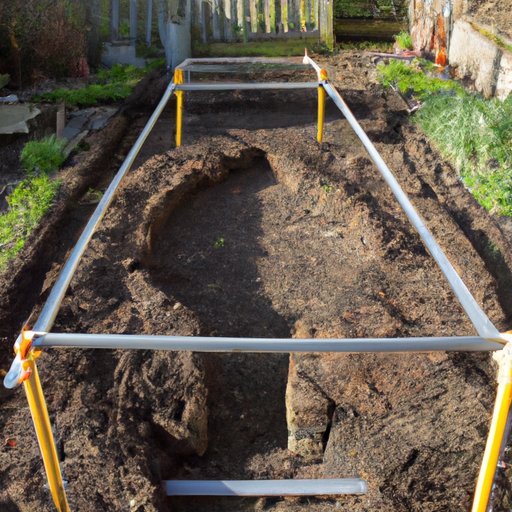Introduction
Writing a series can be an exciting yet intimidating endeavor. It requires a great deal of planning and thought to ensure that all the parts fit together seamlessly. If you’re feeling overwhelmed by the idea of writing a series, don’t worry! This guide will walk you through the process of starting to write a series, from developing a concept to writing the first book.
Develop a Series Concept and Outline
The first step in writing a series is coming up with a concept and creating an outline. This will provide you with a roadmap for your story and help keep you on track as you write. Here’s how to get started:
Brainstorm Ideas
Start by brainstorming ideas for your series. Think about what kind of story you want to tell and what themes or topics you want to explore. You should also consider the genre of your series and whether it will be character-driven or plot-driven.
Create a Basic Outline
Once you have some ideas, create a basic outline for your series. This should include the main plot points and any subplots. You may also want to include notes about your characters and the setting. Don’t worry if the outline isn’t perfect; it’s just meant to give you a starting point.
Flesh Out the Details
Now that you have a basic outline, it’s time to flesh out the details. Think about the characters and their motivations, the setting and its impact on the story, and the themes and motifs that will run throughout the series. These details will help make your story more cohesive and engaging.

Research the Genre and Existing Series
Once you’ve developed a concept and outline, it’s time to do some research. Reading books in the genre you’re writing in will give you a better understanding of the conventions and expectations. It will also give you ideas for ways to make your series unique. Additionally, analyzing successful series will help you understand what works and what doesn’t.
Create Compelling Characters
The characters in your series are integral to its success. They should be dynamic and relatable so that readers can connect with them. Here’s how to create compelling characters:
Choose Main Characters
Start by choosing your main characters. Consider their backgrounds, personalities, and goals. You should also think about how they will interact with each other and how their relationships will evolve over the course of the series.
Define Character Traits
Once you’ve chosen your characters, it’s time to define their traits. Think about their strengths and weaknesses, their fears and desires, and any quirks or idiosyncrasies they may have. This will help bring your characters to life.
Develop Character Arcs
Finally, you should develop character arcs for your characters. This will give them depth and complexity and make them more interesting to readers. Consider how they will grow and change over the course of the series.
Establish a Strong Setting
The setting of your series is just as important as the characters. It should be detailed and vibrant so that readers can visualize it. Here’s how to create a strong setting:
Decide on a Location
First, decide on a location for your series. This could be a real place or an imaginary one. Consider the climate, geography, and culture of the area and how it impacts the story.
Describe the Environment
Next, describe the environment in detail. Think about the sights, sounds, and smells of the area. What kinds of plants and animals live there? How does the environment affect the characters and their actions?

Set Up an Overarching Plot
Now that you’ve established the setting, it’s time to set up an overarching plot. This will act as the spine of your series and give it structure. Here’s how to get started:
Outline the Main Plot Points
Start by outlining the main plot points. Consider the beginning, middle, and end of the series and any major events that will occur. You should also think about how the characters will be affected by these events.
Identify Subplots
In addition to the main plot, you should also identify any subplots. These should be related to the main plot but distinct enough to stand on their own. Think about how the subplots will intersect with the main plot and how they will affect the characters.
Utilize Recurring Themes or Motifs
Recurring themes and motifs can add depth and complexity to your series. They can also help tie the different books together and make them feel like part of a cohesive whole. Here’s how to incorporate themes and motifs:
Incorporate Themes Throughout the Series
Think about the themes you want to explore in your series. Consider how these themes can be woven into the story and how they will affect the characters. Be sure to use them consistently throughout the series.
Use Motifs to Add Depth
Additionally, you can use motifs to add depth to your story. A motif is a recurring symbol or image that has symbolic meaning. Consider how the motifs you choose can be used to illustrate themes or reveal character traits.

Write the First Book of the Series
Now that you’ve developed your concept and outlined the series, it’s time to start writing the first book. Here’s how to get started:
Begin Writing the First Book
Start by writing the first book. Use your outline as a guide and refer back to it if you get stuck. Don’t worry if the first draft isn’t perfect; you can always revise it later.
Keep Track of the Details
As you write, be sure to keep track of the details. This includes character traits, plot points, and any other important information. This will help you stay consistent across the series and ensure that all the parts fit together.
Ensure Consistency Across the Series
Finally, be sure to ensure consistency across the series. This includes making sure characters, settings, and plot points remain the same. It also means using the same writing style throughout the series.
Conclusion
Writing a series can be a daunting task, but it doesn’t have to be. By following the steps outlined in this guide, you can easily start writing a series. Develop a concept and outline, create compelling characters, establish a strong setting, and more. With a bit of planning and effort, you can write an amazing series that readers will love.
(Note: Is this article not meeting your expectations? Do you have knowledge or insights to share? Unlock new opportunities and expand your reach by joining our authors team. Click Registration to join us and share your expertise with our readers.)
